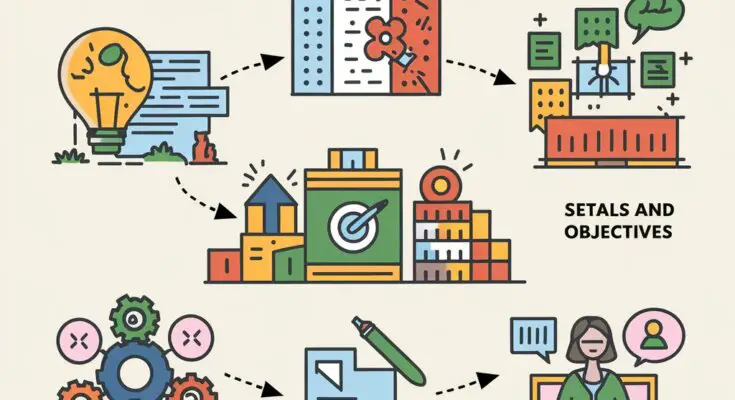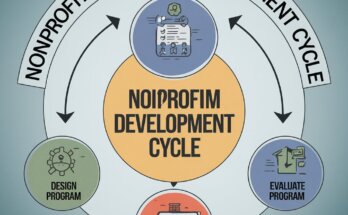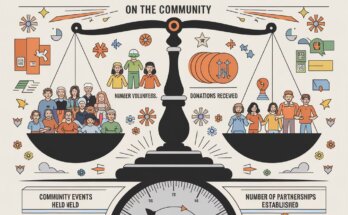Designing a nonprofit program from scratch can seem like a challenging task, but with the right guidance, you can create a program that delivers meaningful results. In this blog post, we’ll walk you through how to design a nonprofit program from scratch, breaking it down into simple, actionable steps that anyone can follow.
Whether you’re a new nonprofit leader or someone with years of experience looking to start a new initiative, this guide will help you lay the foundation for success.
Ready to get started? Grab a copy of Nonprofit Needs Assessment Essentials to deepen your understanding, and let’s begin creating a program that makes a difference!
Define the Purpose of Your Program
The first step in designing a nonprofit program is to clearly define its purpose. Ask yourself, “What problem am I trying to solve?”
Understanding the need in your community is crucial for creating a program that resonates with your audience. Conducting a needs assessment is a valuable strategy to gather data on the issues your target population faces.
This process involves:
- Identifying the Problem: Use surveys, interviews, or focus groups to gather information. For example, if you’re starting a program for at-risk youth, you might find through surveys that many lack access to mentoring opportunities.
- Analyzing the Data: After collecting data, analyze it to understand the scope and urgency of the problem. This will help you tailor your program to address the most pressing needs.
- Setting Clear Goals: Based on your findings, establish specific, measurable, achievable, relevant, and time-bound (SMART) goals for your program. For example, a goal could be, “Increase access to mentorship for 100 at-risk youth within one year.”
Example: Youth Mentoring Program
Let’s consider an example of a nonprofit focusing on youth mentoring. After conducting a needs assessment, the organization finds that many young people in their community feel isolated and lack guidance in education and career choices. The organization sets a goal to connect 50 youths with mentors within the first year.
Developing a Program Framework
Once you have a clear purpose and goals, it’s time to outline your program framework.
This includes:
- Defining the Target Audience: Identify who will benefit from your program. In our youth mentoring example, the target audience is at-risk youth aged 12-18.
- Creating Program Activities: Design specific activities that will help you achieve your goals. Activities for the youth mentoring program might include one-on-one mentoring sessions, group workshops, and community events.
- Establishing a Timeline: Create a timeline for when each activity will take place. This helps keep your program organized and on track.
Example: Activities for the Youth Mentoring Program
- One-on-One Sessions: Each mentor meets with their mentee weekly for personalized guidance.
- Workshops: Monthly workshops on topics like resume writing, interview skills, and study techniques.
- Community Events: Quarterly events where mentees can showcase their achievements and network with local leaders.
Building a Team
No program can succeed without a strong team. Here are some steps to build your team:
- Identify Roles and Responsibilities: Determine what roles you need to fill. For a mentoring program, you might need mentors, program coordinators, and volunteers.
- Recruit Team Members: Use job boards, social media, and community networks to find passionate individuals. Highlight the impact they can make in the community.
- Provide Training: Equip your team with the necessary skills and knowledge to effectively execute the program. For mentors, provide training on effective communication and relationship-building techniques.
A Mentor’s Journey
Let’s take a moment to share a story about Sarah, a mentor in our youth mentoring program. Sarah was once a shy teenager who struggled in school. After receiving mentorship herself, she decided to give back by becoming a mentor.
During her first mentoring session with Michael, a 15-year-old who felt lost in his studies,
Sarah discovered that Michael had a passion for art but didn’t know how to pursue it. Together, they set goals for Michael to create a portfolio and apply for an art program at a local community college.
Over the months, Michael flourished under Sarah’s guidance, gaining confidence in his abilities and eventually securing a spot in the program.
Sarah’s story is a powerful testament to the transformative impact of mentorship and the importance of a strong team dedicated to empowering youth.
Securing Funding and Resources
Funding is a critical aspect of launching your nonprofit program. Here’s how to secure the necessary resources:
- Identify Funding Sources: Research potential grants, sponsorships, and donations. Foundations often fund programs that align with their missions. For example, look for grants focused on youth development or education.
- Develop a Budget: Create a detailed budget outlining all anticipated costs, including staffing, materials, and activities. A well-planned budget demonstrates your program’s sustainability to potential funders.
- Craft Compelling Proposals: When applying for grants, tell a story. Explain the problem, your proposed solution, and the expected impact. Use data from your needs assessment to support your case.
Example: Funding for the Youth Mentoring Program
The youth mentoring program identifies a local foundation that supports initiatives for at-risk youth. They apply for a grant by submitting a proposal highlighting their needs assessment data, program activities, and budget, ultimately securing $10,000 to launch the program.
Implementation of the Program
With funding secured and a team in place, it’s time to implement your program. Here’s how to ensure a smooth rollout:
- Launch the Program: Organize an event to officially launch your program. This could include inviting community members, showcasing your goals, and introducing team members and mentors.
- Promote Your Program: Use social media, local newspapers, and community events to spread the word. Highlight success stories to attract more participants and supporters.
- Engage Participants: Foster a welcoming environment for participants. Regularly check in with them to ensure they feel supported and valued.
Example: Launch Event for the Youth Mentoring Program
The youth mentoring program hosts a launch event at a local community center, inviting families, local leaders, and potential mentors. They share the program’s goals, success stories, and how attendees can get involved.
Monitoring and Evaluation
Monitoring and evaluating your program is essential to ensure its effectiveness. Here’s how to do it:
- Set Evaluation Metrics: Determine how you will measure the success of your program. This could include tracking the number of mentees served, participant satisfaction, or academic improvements.
- Collect Data: Use surveys, interviews, and feedback forms to gather information from participants and team members. This data will help you assess what’s working and what needs improvement.
- Adjust as Needed: Use the feedback to make necessary adjustments to your program. Continuous improvement is key to long-term success.
Example: Evaluation of the Youth Mentoring Program
After six months, the program surveys mentees to gauge their satisfaction and perceived impact. Results show that 80% of participants feel more confident in their skills. Based on feedback, the program decides to add more group workshops on creative skills to better support participants’ interests.
Conclusion
Designing a nonprofit program from scratch may seem overwhelming, but by following these steps—understanding the purpose, developing a framework, building a team, securing funding, implementing the program, and monitoring its effectiveness—you can create a successful program that makes a real difference in the community.
As you embark on this journey, remember that your program can transform lives and communities.
If you found this guide helpful, subscribe to the Nonprofit Navigators Newsletter for more expert tips and resources. Also, don’t forget to download, Top 10 Donor Stewardship Strategies for Nonprofits + Free Donor Engagement Checklist, to enhance your donor engagement efforts. Together, let’s build programs that change lives!




